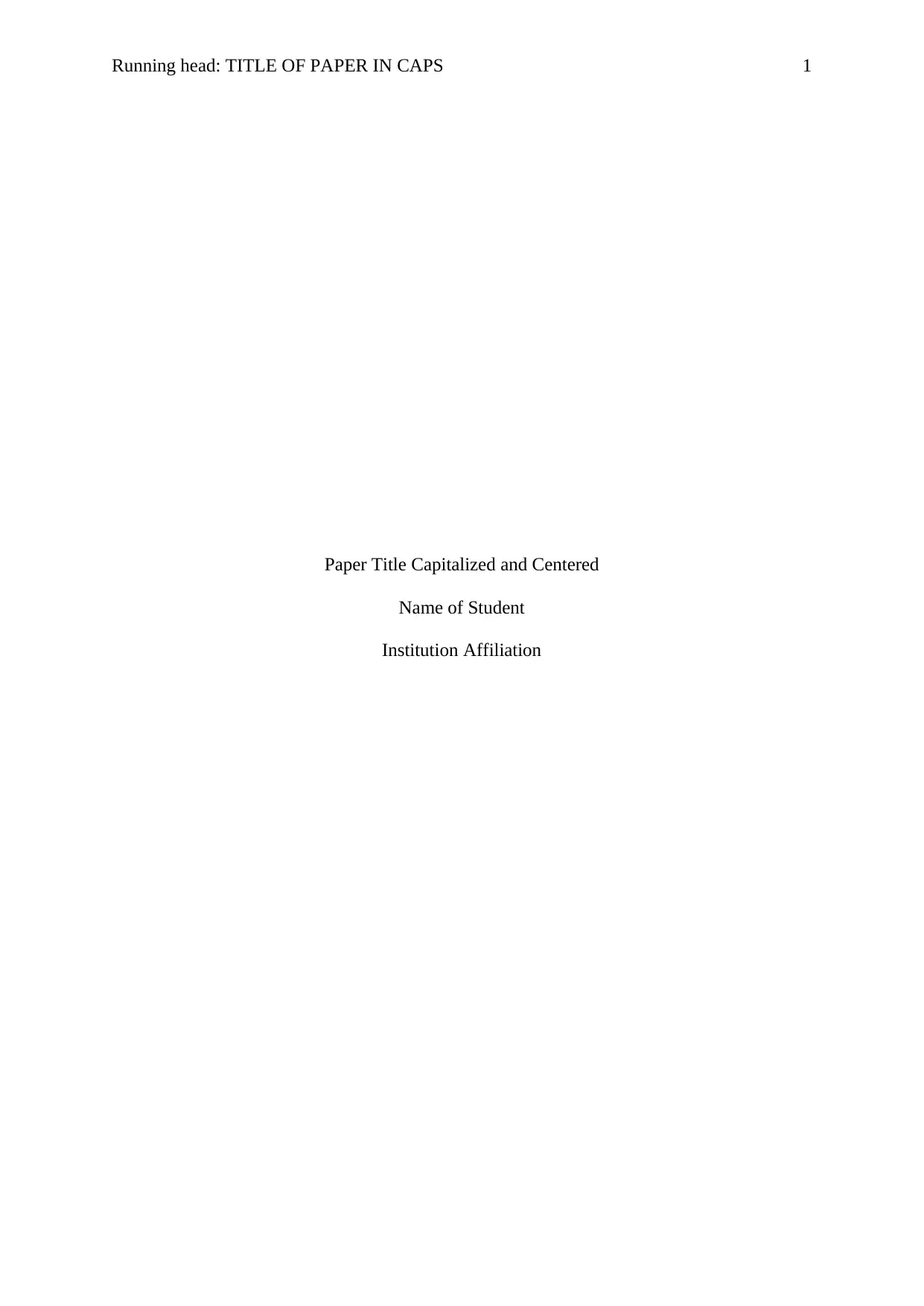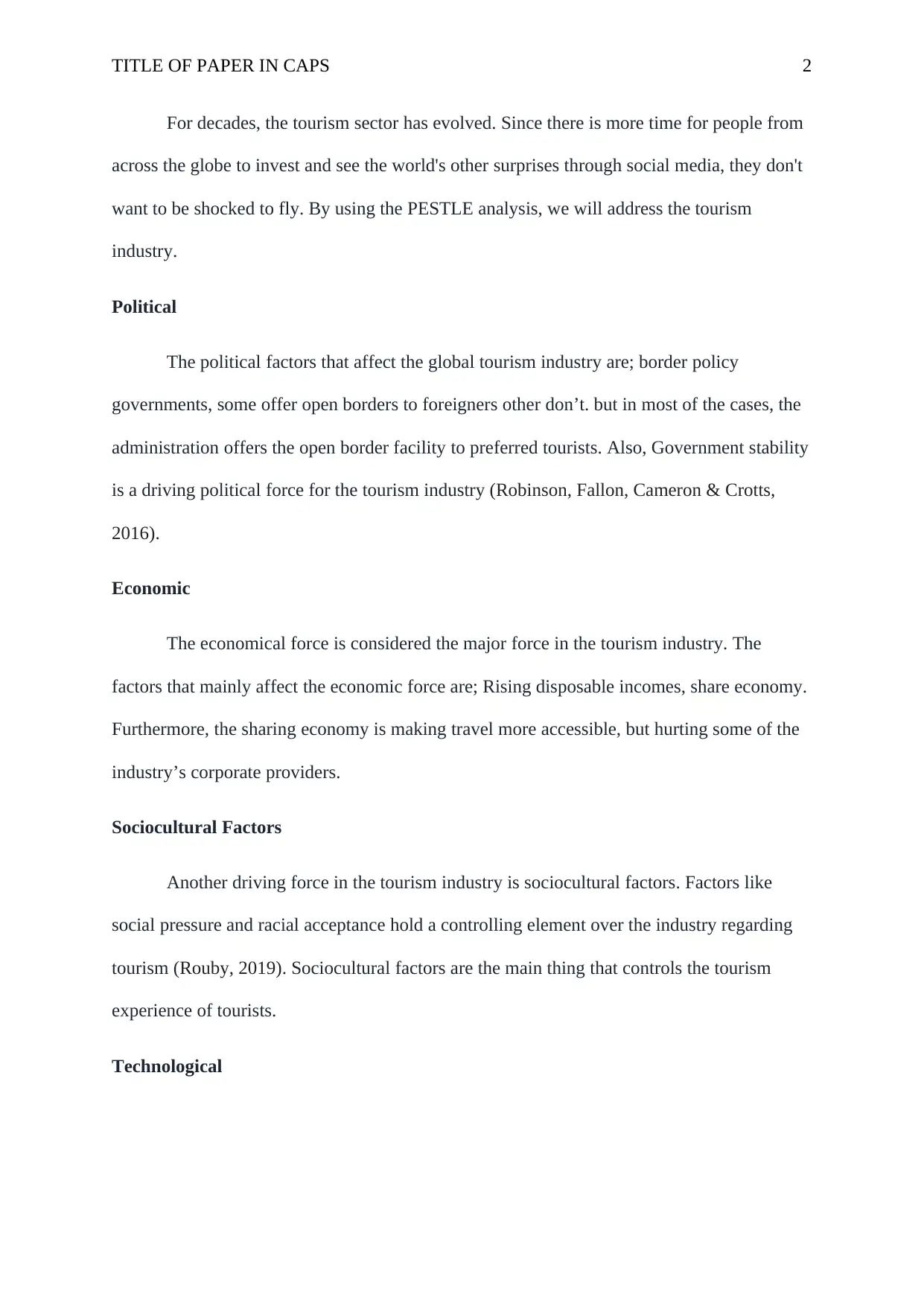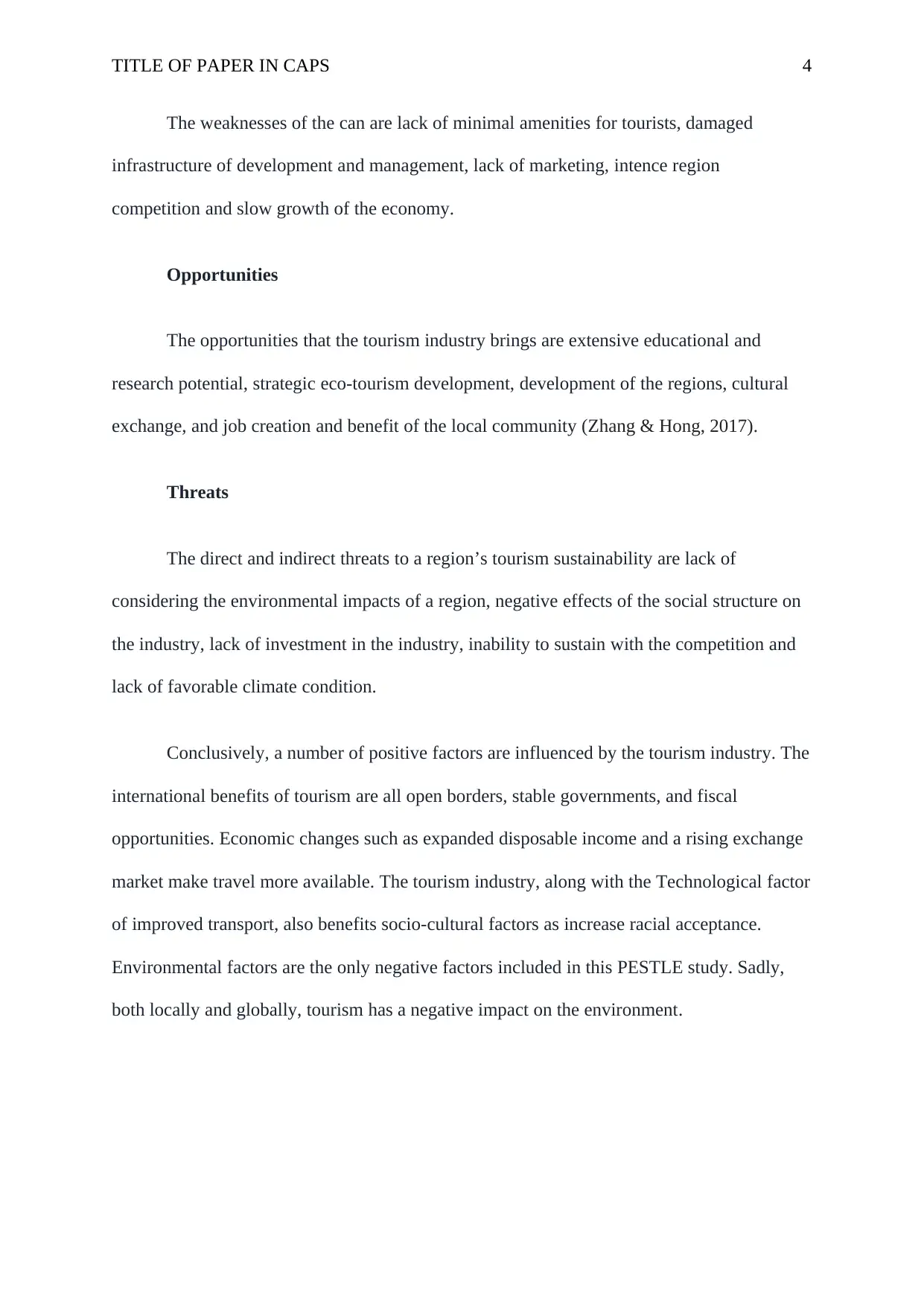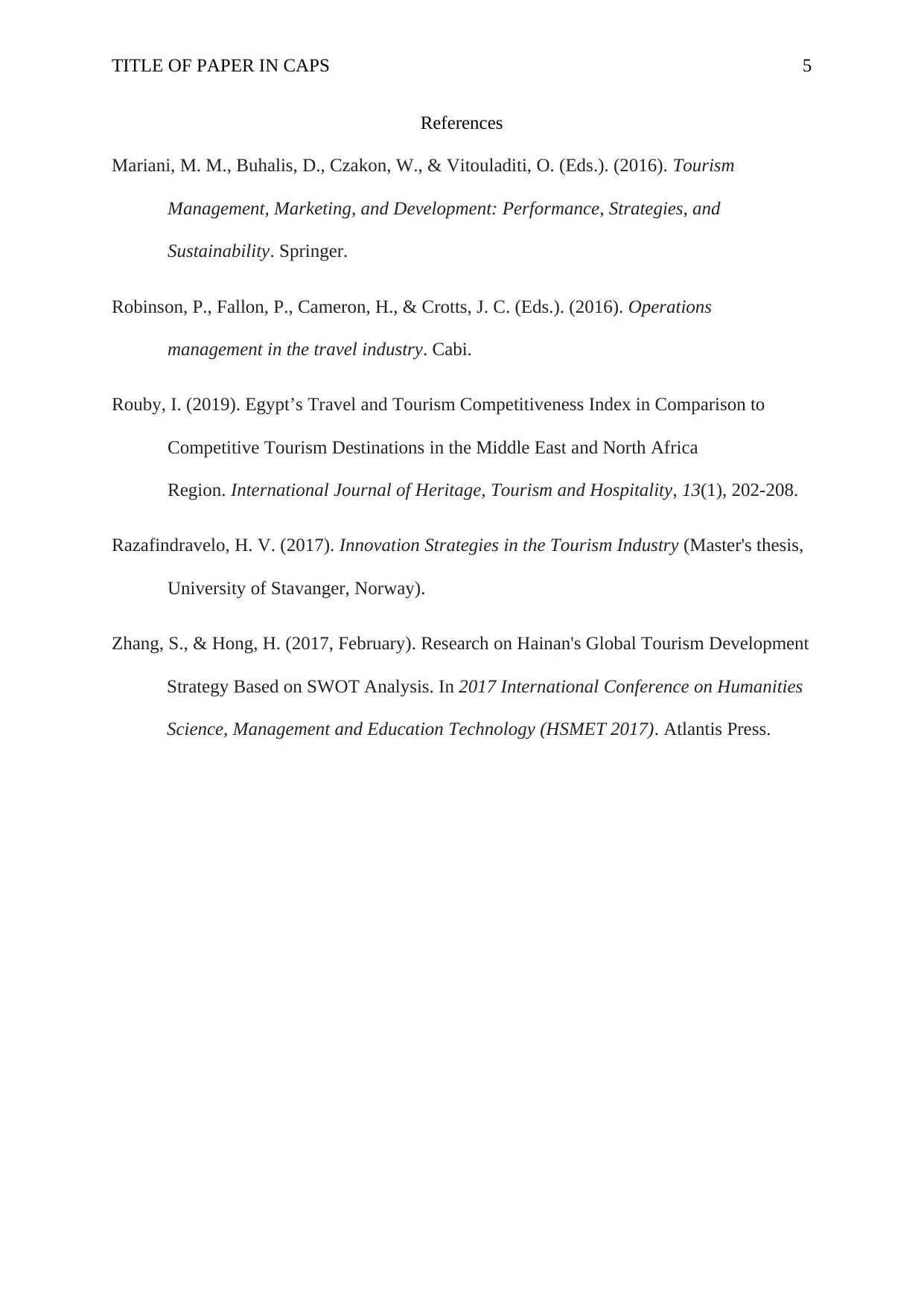Comprehensive Analysis of the Tourism Industry: PESTLE and SWOT
VerifiedAdded on 2022/08/31
|5
|929
|26
Report
AI Summary
This report provides a detailed analysis of the global tourism industry, employing both PESTLE and SWOT frameworks. The PESTLE analysis examines the political, economic, sociocultural, technological, legal, and environmental factors influencing the industry. Political factors include border policies and government stability, while economic factors encompass disposable incomes and the sharing economy. Sociocultural aspects involve social pressure and racial acceptance, and technological factors cover transport systems and booking processes. Legal obligations and environmental impacts, including pollution and waste, are also considered. The SWOT analysis assesses the industry's strengths (weather, resources, support), weaknesses (lack of amenities, infrastructure), opportunities (eco-tourism, job creation), and threats (environmental impacts, competition). The report concludes by emphasizing the positive international and economic benefits of tourism, along with its sociocultural and environmental impacts.
1 out of 5











![[object Object]](/_next/static/media/star-bottom.7253800d.svg)